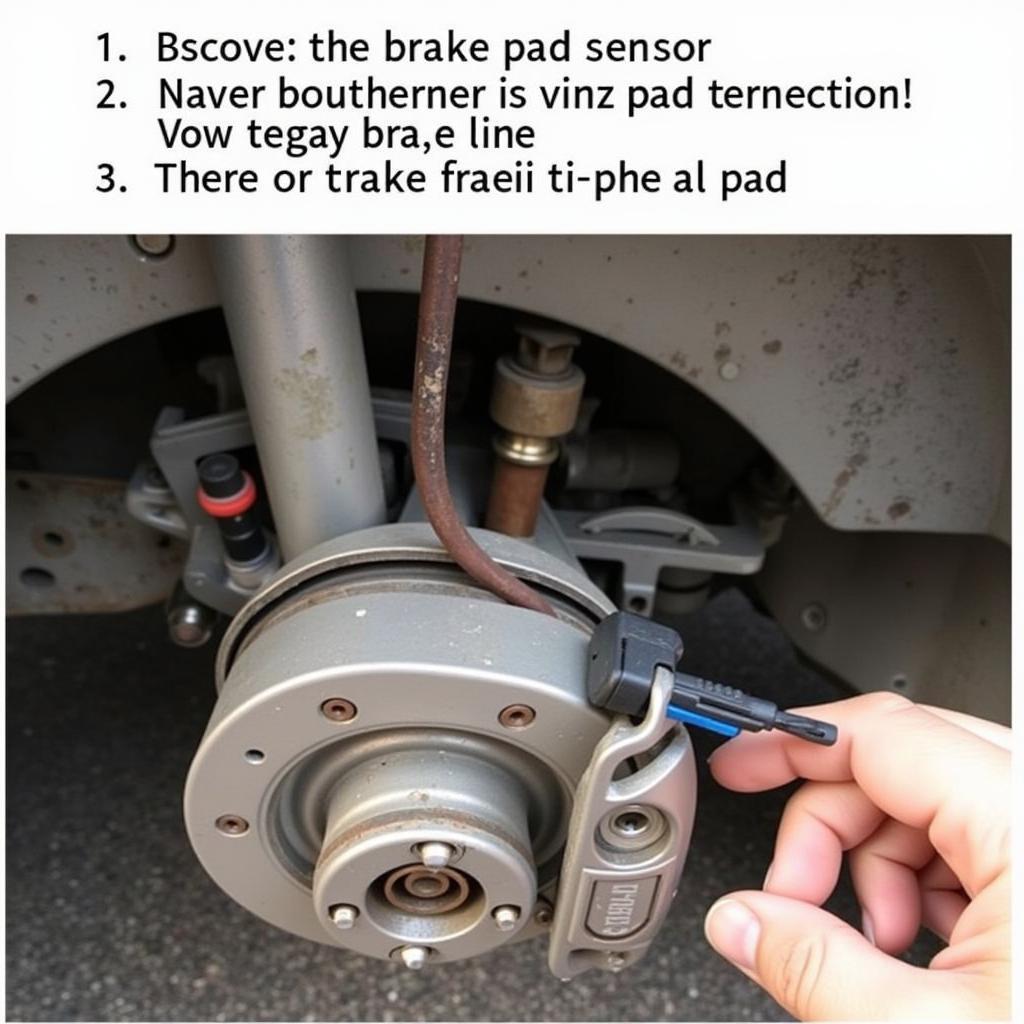The brake pad warning light on your 2003 Volkswagen Passat is an essential safety feature. When illuminated, it signals that your brake pads are wearing thin and need replacing. While this light is crucial for your safety, it can sometimes illuminate due to a minor glitch or after routine maintenance like brake pad replacement. If you’re confident your brake pads are in good condition and the light persists, you can likely reset it yourself.
This guide provides a step-by-step walkthrough on how to reset the 2003 VW Passat brake pad warning light. However, it’s essential to remember that this guide is for informational purposes only. If you’re unsure about any step or uncomfortable working on your car, it’s always best to consult a qualified mechanic.
Understanding Your VW Passat’s Brake Pad Sensor
Before attempting to reset the warning light, it’s helpful to understand how the brake pad sensor works. The 2003 VW Passat utilizes a wear sensor, a small wire embedded in the brake pad material. As the brake pad wears down, so does the sensor wire. Eventually, the wire breaks, breaking the electrical circuit and triggering the brake pad warning light on your dashboard.
What You’ll Need
Resetting the brake pad warning light is a straightforward process. You won’t need any special tools, just a few minutes of your time.
Step-by-Step Guide to Resetting the Brake Pad Warning Light
Here’s how to reset the brake pad warning light on your 2003 VW Passat:
-
Turn the ignition to the “ON” position. This powers up your car’s electrical system without starting the engine.
-
Locate the brake fluid reservoir. This is usually a translucent plastic container located near the firewall on the driver’s side.
-
Identify the sensor wire connector. Near the brake fluid reservoir, you’ll find a single wire with a connector. This is the brake pad sensor wire.
-
Disconnect the sensor wire connector. Carefully unplug the connector.
-
Use a paperclip or small wire to bridge the connector’s terminals. Straighten a paperclip and insert both ends into the connector’s terminals to complete the circuit.
-
Turn the ignition off.
-
Remove the paperclip or wire from the connector.
-
Reconnect the sensor wire connector.
-
Turn the ignition to the “ON” position and check the dashboard. The brake pad warning light should be off.
Why is My Brake Pad Warning Light Still On?
If you’ve followed these steps and the warning light remains illuminated, there are a few possible explanations:
- Faulty brake pad sensor: The sensor itself could be faulty. Replacing the sensor is a relatively simple job.
- Wiring issue: There might be a break or damage to the sensor wire.
- Another brake system problem: The warning light could indicate a problem beyond worn brake pads, such as low brake fluid or an issue with the ABS system.
 Brake Pad Sensor Location
Brake Pad Sensor Location
When to Consult a Mechanic
While resetting the brake pad warning light can often be a DIY task, certain situations warrant the expertise of a qualified mechanic:
- You are uncomfortable working on your car: Your safety is paramount. If you’re not comfortable performing these steps, it’s best to seek professional help.
- The warning light remains on after resetting: This could signal a more significant issue that requires professional diagnosis.
- You notice other brake system issues: Problems such as a spongy brake pedal, unusual noises when braking, or pulling to one side while braking indicate potential issues that a mechanic should address.
Conclusion
Resetting the brake pad warning light on your 2003 VW Passat can be a simple DIY task. However, it’s crucial to remember that this guide is not a substitute for professional advice. If you’re unsure about any aspect of your car’s braking system, it’s always best to consult a qualified mechanic to ensure your safety and the proper functioning of your vehicle.

